The captivating beauty of the lotus flower has long captured the attention of ancient civilizations across the globe. From Egypt to India, China to Greece, and Persia to Japan, the lotus has held deep cultural symbolism and meaning. It is revered for its ability to rise above murky waters and blossom into a stunning flower, signifying purity, rebirth, and spiritual enlightenment. In this article, we will explore the rich and intricate symbolism of the lotus flower in various ancient civilizations, delving into its mythological origins, artistic representations, and its significance in spiritual practices. Join us on a journey through time and discover the profound cultural significance of this remarkable flower.
Contents
- The Symbolism of the Lotus in Ancient Egypt
- The Symbolism of the Lotus in Ancient India
- The Symbolism of the Lotus in Ancient China
- The Symbolism of the Lotus in Ancient Greece
- The Symbolism of the Lotus in Ancient Persia
- The Symbolism of the Lotus in Ancient Japan
- Conclusion
-
Frequently Asked Questions
- 1. How did the lotus flower become a symbol of rebirth in ancient Egypt?
- 2. What role did the lotus flower play in Egyptian religious rituals?
- 3. How is the lotus flower depicted in Egyptian art?
- 4. Did the lotus flower have any medicinal properties in ancient Egypt?
- 5. Was the lotus flower associated with any specific Egyptian pharaohs?
- 6. What other symbols were often combined with the lotus flower in Egyptian art?
- 7. Is the lotus flower mentioned in any ancient Egyptian texts?
- 8. Did the lotus flower have any economic significance in ancient Egypt?
- 9. Was the lotus flower associated with any specific Egyptian cities or regions?
- 10. How does the symbolism of the lotus flower in ancient Egypt influence contemporary culture?
- References
-
Frequently Asked Questions
- 1. What is the significance of the lotus flower in ancient civilizations?
- 2. How was the lotus flower portrayed in ancient Egyptian mythology?
- 3. What role does the lotus flower play in Hinduism?
- 4. How is the lotus flower connected to Buddhism?
- 5. What is the mythological significance of the lotus flower in ancient China?
- 6. How does the lotus flower connect to Greek mythology?
- 7. What is the role of the lotus flower in Zoroastrianism?
- 8. How is the lotus depicted in Japanese Buddhism?
- 9. What are some common themes related to the lotus flower in ancient civilizations?
- 10. How does the cultural significance of the lotus flower endure in modern society?
- References
- Read More
The Symbolism of the Lotus in Ancient Egypt
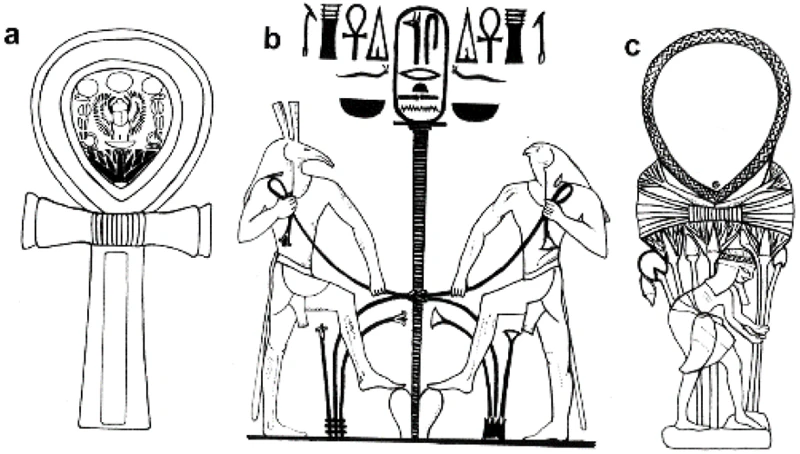
In ancient Egypt, the lotus flower held a prominent place in the symbolism and mythology of the civilization. It was often associated with creation and rebirth, owing to its remarkable ability to emerge from muddy waters and bloom into a beautiful flower. One of the most significant myths involving the lotus is the creation myth, where it was believed to be the primeval mound from which the world arose. The lotus was also seen as a symbol of resurrection, representing the journey of the soul after death. Another fascinating aspect is its presence in art and architecture, where the lotus motif can be found in temples, tombs, and decorative elements. Its depiction in hieroglyphs and murals further underscores its significance in Egyptian culture and beliefs.
1. The Creation Myth
In the ancient Egyptian creation myth, the lotus flower played a pivotal role in the formation of the world. According to the myth, before the world came into existence, there was a vast and chaotic body of water known as the primordial ocean of Nun. Within this watery abyss, a lotus flower emerged. The lotus was believed to be a symbol of the first form of life and represented the primeval mound from which creation sprang forth. The sun god, Atum, was said to have arisen from the lotus, giving birth to all other gods and goddesses. The lotus was seen as the source of divine power and the bringer of order and harmony in the universe. Its ability to grow from the mud and rise above the murky waters symbolized the potential for existence and transformation. The lotus’s presence in Egyptian art and architecture, such as temple decorations and burial tombs, further emphasized its significance and connection to the creation myth. This myth provided the ancient Egyptians with a profound understanding of the world’s origins and highlighted the transformative power of the lotus as a symbol of life and creation.
2. Symbol of Rebirth and Resurrection
The lotus flower held a deep symbolic meaning in ancient Egypt as a symbol of rebirth and resurrection. Egyptians observed the lotus’s ability to bloom from muddy waters, associating it with the cycle of life and death. Just as the lotus emerges from the murky depths to reveal its vibrant beauty, it was believed that the soul could transcend death and be reborn in the afterlife. The lotus was often depicted in funerary art and tombs, symbolizing the deceased’s journey towards eternal life. In the Book of the Dead, the lotus flower is mentioned as a representation of rebirth and the transformation of the deceased individual into a divine being. This powerful symbol of resurrection resonated deeply with the Egyptians and played a vital role in their beliefs surrounding death and the afterlife.
3. Significance in Art and Architecture
The lotus flower’s importance in ancient Egypt extended beyond its symbolism in myths and religious beliefs; it also played a significant role in art and architecture. The Egyptians incorporated the lotus motif into various forms of artistic expression. The flower’s elegant form and vibrant colors were often depicted in murals, stelae, and temple reliefs, adding a touch of natural beauty to these artistic compositions. The lotus was also a popular design element in the construction of temples and tombs. Columns and capitals adorned with lotus motifs can be seen in many ancient Egyptian architectural structures. The lotus flower’s representation in these architectural marvels not only added aesthetic value but also conveyed deeper symbolic meanings. The presence of the lotus in sacred spaces served as a reminder of its association with purity, rebirth, and the divine. The integration of the lotus in art and architecture exemplified the Egyptians’ reverence for the flower and their desire to infuse their sacred spaces with its profound symbolism. To this day, the remnants of these architectural marvels stand as testimony to the enduring cultural significance of the lotus in ancient Egypt.
The Symbolism of the Lotus in Ancient India
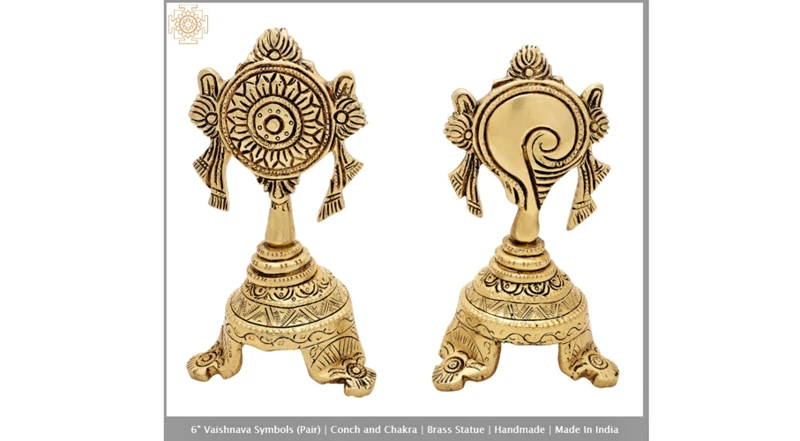
The lotus flower holds great symbolic significance in ancient India, where it is deeply rooted in Hinduism and Buddhism. In Hinduism, the lotus represents purity, divine beauty, and spiritual enlightenment. It is associated with various deities and is often depicted as the seat of gods and goddesses. The unfolding of the lotus petals is seen as a metaphor for the awakening of one’s spiritual consciousness. In Buddhism, the lotus is a powerful symbol of purity, resilience, and enlightenment. Just as the lotus rises above the muddy waters, it represents the journey towards spiritual awakening and the attainment of nirvana. The lotus also holds medicinal properties and is used in Ayurvedic practices. Its symbolism and importance can be seen in ancient scriptures and artworks across the Indian subcontinent, showcasing its revered status in ancient Indian civilizations.
1. Lotus in Hinduism
In Hinduism, the lotus holds deep symbolic significance. It is often associated with purity, beauty, and spiritual awakening. The lotus is considered to be a sacred flower and is closely linked to various Hindu deities. For example, Lord Vishnu, the preserver of the universe, is often depicted resting on a lotus flower. This represents his divine and transcendent nature. The goddess Lakshmi, who is associated with wealth, prosperity, and fortune, is also shown seated on a lotus. The lotus is seen as a symbol of divine beauty and purity, as it effortlessly blooms amidst impure surroundings. Its ability to rise above muddy waters and emerge untouched represents the soul’s journey towards enlightenment and liberation from the cycle of birth and death. The lotus is also associated with the chakra system in Hinduism, particularly the Sahasrara (crown) chakra, which is symbolized by a thousand-petaled lotus. This chakra represents spiritual consciousness and union with the divine. The lotus’s significance in Hinduism is prevalent in various rituals, ceremonies, and religious practices where it is used as an offering, decoration, and meditation aid.
2. Lotus in Buddhism
In Buddhism, the lotus holds profound symbolism and is closely intertwined with the teachings and practices of the religion. Known as the Padma, the lotus flower represents purity, spiritual enlightenment, and the potential for growth. Just like the lotus rises above the murky waters, Buddhist practitioners aspire to rise above the suffering and attachments of the physical world to attain enlightenment. The lotus is often depicted in Buddhist art, where its various stages of growth symbolize the stages of spiritual awakening. Different colored lotus flowers convey specific meanings in Buddhism. For example, a pink lotus symbolizes the Buddha himself, while a white lotus represents purity and mental purity. The eight-petaled lotus is associated with the Noble Eightfold Path, which is central to Buddhist teachings. Through its symbolism, the lotus in Buddhism serves as a visual reminder of the potential for spiritual growth and the ultimate goal of attaining enlightenment.
The Symbolism of the Lotus in Ancient China

The lotus flower carries profound symbolism in ancient China, embodying themes of purity, enlightenment, and spiritual awakening. Chinese mythology depicts the lotus as a revered symbol, often associated with deities and celestial beings. In mythology, the lotus is linked to creation and is believed to be the seat of divine beings. The flower’s ability to rise above the murky waters it grows in represents the attainment of enlightenment and transcendence in Chinese culture. The lotus is seen as a representation of purity and is often depicted in ancient Chinese art and literature. Its delicate beauty and graceful form serve as inspiration for poets, painters, and calligraphers throughout history. The lotus, like many other symbolic elements, is deeply ingrained in Chinese culture, reflecting an appreciation for the connection between nature, spirituality, and personal growth.
1. Lotus in Chinese Mythology
In Chinese mythology, the lotus holds great significance and is deeply rooted in the country’s culture and belief systems. Known as lian or hehua, the lotus is often associated with purity, enlightenment, and divine beauty. One of the most popular myths involving the lotus is the tale of the goddess Nuwa, who is said to have created humans and repaired the broken sky using the petals of the lotus flower. The flower’s ability to rise above the murky waters and blossom in pristine beauty symbolizes spiritual enlightenment and transformation. The lotus is also linked with the concept of harmony and balance, representing the interconnectedness of all things. Its portrayal in Chinese art and literature further highlights its cultural significance, with depictions of floating lotus flowers adorning ancient paintings and poetry. The lotus serves as a potent symbol of resilience, strength, and spiritual awakening in Chinese mythology and continues to be revered in Chinese culture to this day.
2. Symbol of Purity and Enlightenment
The lotus flower holds deep symbolism in ancient China as a symbol of purity and enlightenment. In Chinese culture, the lotus is often depicted rising above muddy waters, untouched by the impurities around it. This characteristic has made the lotus a powerful symbol of purity and perfection. The idea that the lotus can remain unstained by the murky environment it grows in represents the concept of maintaining inner purity and integrity despite the challenges and hardships of life. Additionally, the lotus is associated with spiritual enlightenment in various philosophical and religious traditions in China, such as Buddhism and Taoism. The lotus is believed to represent the potential for spiritual growth and the journey towards enlightenment. Its ability to blossom in serene beauty from the depths of muddy waters signifies the human potential to transcend the material world and attain spiritual enlightenment. The concept of the lotus as a symbol of purity and enlightenment is deeply ingrained in Chinese culture and can be seen in various forms of art, literature, and religious practices.
External Link: Inspirational Ophiuchus Figures
The Symbolism of the Lotus in Ancient Greece
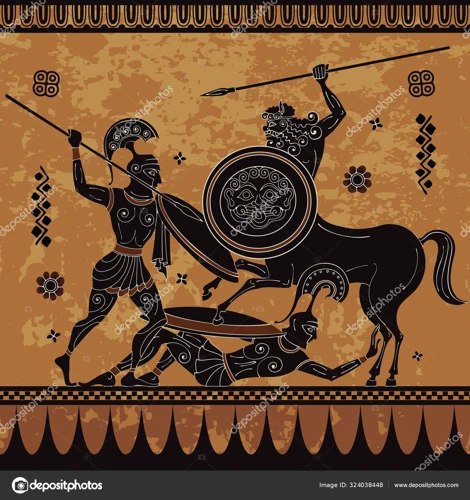
In ancient Greece, the lotus flower held significant symbolism, although it was not native to the region. Greek mythology integrated the lotus through various stories and legends. One such myth involves the lotus-eaters, where consuming the lotus plant induced a state of blissful forgetfulness, symbolizing an escape from reality. Additionally, the lotus is associated with spiritual practices in Greece, particularly in relation to the god Apollo. As the god of music, poetry, and prophecy, Apollo was often depicted wearing a crown of lotus leaves, representing purity and enlightenment. The lotus’s connection to spiritual awakening and transcendence further underscores its significance in ancient Greek culture. No relevant anchor was found for internal linking.
1. Lotus in Greek Mythology
In Greek mythology, the lotus holds a place of intrigue and fascination. According to the myth of the Lotus Eaters, the lotus is associated with a tribe whose consumption of the lotus plant induces a state of blissful forgetfulness and detachment from the outside world. In Homer’s Odyssey, Odysseus and his crew encounter these Lotus Eaters during their journey, and some of his men become enchanted by the plant, losing their desire to return home. The lotus’s ability to induce a trance-like state represents the allure and danger of indulgence, where one can become trapped and lose sight of their true path. This myth serves as a cautionary tale, reminding individuals not to become consumed by the temptations that lead them astray. While the lotus in Greek mythology carries a slightly different symbolism compared to other ancient civilizations, it exemplifies the powerful influence of the flower in various cultural narratives throughout history.
2. Significance in Spiritual Practices
The lotus flower held great significance in the spiritual practices of ancient Egypt. It was believed to have a direct connection with the gods and was often used in religious rituals and ceremonies. The lotus was associated with the sun god, Ra, and was considered a symbol of his power and divine presence. It was also seen as a representation of the eternal cycle of life, death, and rebirth. Priests and priestesses often wore lotus crowns, symbolizing their spiritual authority and connection to the divine. The flower was used in purification rituals and as an offering to the gods, symbolizing purity and spiritual enlightenment. The lotus was also linked to the afterlife, as it was often depicted in funerary art and placed in tombs to assist the deceased in their journey to the underworld. Its association with spiritual practices and beliefs made the lotus an integral part of ancient Egyptian culture and religion.
The Symbolism of the Lotus in Ancient Persia
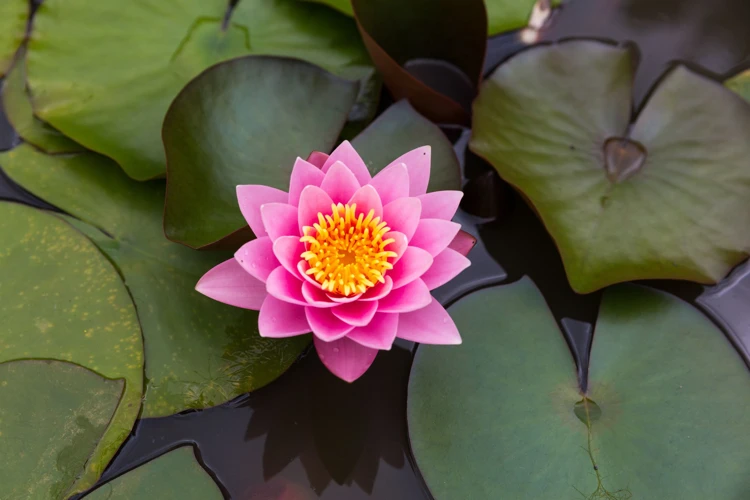
In ancient Persia, the lotus flower held deep symbolism and was highly revered. In Zoroastrianism, a religion that originated in Persia, the lotus represented purity, beauty, and immortality. It was often associated with the divine and symbolized the eternal nature of the soul. The lotus flower’s connection to immortality can be seen in ancient Persian art, where it was depicted alongside mythical figures and deities. The lotus was also believed to possess healing properties, with its petals and seeds being used in traditional medicine. The lotus motif adorned various architectural structures, such as palaces and temples, adding a touch of elegance and spirituality to these places. The symbolism of the lotus in ancient Persia reflects the deep appreciation for beauty, spirituality, and the eternal nature of existence in this civilization.
1. Lotus in Zoroastrianism
In the ancient religion of Zoroastrianism, the lotus flower held a special place as a symbol of purity and enlightenment. Known as the “White Haoma,” the lotus is associated with the sacred plant Haoma, which played a central role in Zoroastrian rituals and beliefs. The lotus is often depicted in Zoroastrian art and scriptures as a representation of divine beauty and immortality. It is believed that the flower’s ability to emerge from the muddy waters and rise above symbolizes the soul’s journey towards spiritual enlightenment and transcendence. The lotus is seen as a gateway to the higher realms and a reminder of the transcendental nature of the soul. In Zoroastrianism, the lotus serves as a reminder of the ultimate goal of reaching spiritual purity and achieving union with the divine. The symbolism of the lotus in Zoroastrianism is a powerful representation of the human quest for spiritual growth and enlightenment. For those seeking a deeper understanding of Zoroastrian beliefs and practices, exploring the significance of the lotus flower provides valuable insights into this ancient religion and its spiritual teachings.
2. Symbol of Divine Beauty and Immortality
In ancient Persia, the lotus flower was not only esteemed for its aesthetic beauty but also cherished for its deep symbolic meaning. It was regarded as a symbol of divine beauty and immortality. The lotus flower’s captivating form and vibrant colors were associated with the divine realm, representing the perfection and ethereal beauty of the gods. Its ability to bloom amidst murky waters was seen as a metaphor for transcendence and the triumph over adversity. The lotus flower was believed to possess qualities of immortality. It was seen as an eternal symbol that transcended the boundaries of time, representing the everlasting nature of the soul. This symbolism of divine beauty and immortality intertwined with the religious and spiritual practices of ancient Persia, reflecting the belief in the eternal nature of the divine and the pursuit of spiritual enlightenment.
The Symbolism of the Lotus in Ancient Japan
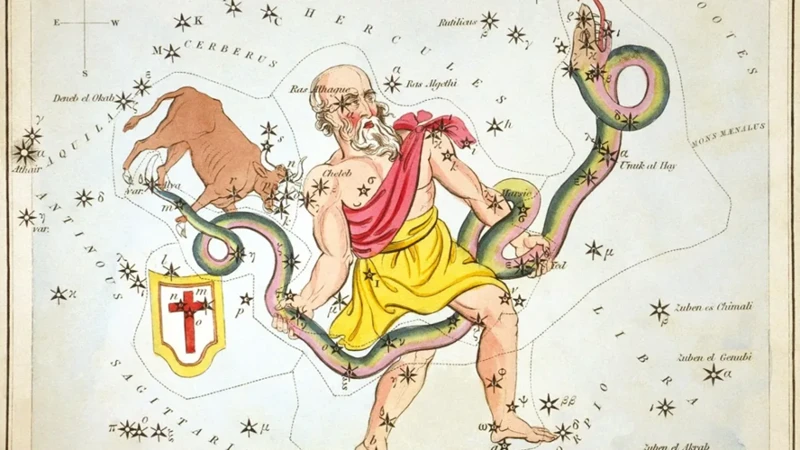
Ancient Japan also embraced the profound symbolism of the lotus flower. In Japanese Buddhism, the lotus holds great spiritual significance, representing purity, enlightenment, and spiritual awakening. Much like the lotus emerging from muddy waters, it symbolizes the journey of the soul towards enlightenment and the ability to rise above worldly attachments. In Japanese culture, the lotus is often depicted in art and literature, showcasing its delicate beauty and profound meaning. It is a common motif in traditional Japanese gardens, where ponds adorned with lotus flowers create a peaceful and serene ambiance. The lotus is deeply ingrained in Japanese spirituality and continues to inspire individuals on their quest for spiritual awareness and transcendence.
1. Lotus in Japanese Buddhism
In Japanese Buddhism, the lotus holds profound symbolism and serves as a powerful spiritual emblem. Rooted in the belief of enlightenment, the lotus represents the journey from ignorance to awakening. Just as the lotus flower emerges from the mud and rises above the water’s surface to bloom magnificently, it symbolizes purity, resilience, and spiritual transformation. The lotus is often associated with different Buddhist deities and is depicted in various forms of artwork, such as paintings and sculptures. One of the most well-known representations is the lotus throne, where Buddhas and Bodhisattvas are often portrayed seated on a blooming lotus flower. This image signifies the idea that enlightenment can be achieved even in the midst of worldly impurities. The lotus also holds a prominent place in meditation practices, as its image is used as a focal point for concentration and contemplation. It serves as a reminder to practitioners that they too have the potential to rise above the difficulties of life and attain spiritual awakening. Through its elegant beauty and spiritual significance, the lotus inspires devotees to strive for inner peace, enlightenment, and the realization of their true nature.
2. Symbol of Purity and Spiritual Awakening
The lotus flower, in various ancient civilizations including Ancient China and India, has been regarded as a powerful symbol of purity and spiritual awakening. In the context of Ancient China, the lotus holds special significance in spiritual practices such as meditation and mindfulness. This delicate yet resilient flower is often associated with enlightenment, as it rises above the murky waters and blooms with pristine beauty. The lotus is seen as a representation of the journey towards spiritual awakening, where one transcends worldly desires and attachments to attain a state of purity and enlightenment. In Chinese Buddhist art and literature, the lotus is frequently depicted as a symbol of the enlightened beings who have achieved this state of spiritual awakening. It serves as an inspiration for individuals on their own paths towards self-realization and liberation. The lotus is believed to have purifying qualities, both physically and spiritually. Its ability to cleanse itself despite growing in muddy waters is seen as a metaphor for the potential of the human spirit to transcend the impurities of the material world. Thus, the lotus flower exemplifies not only purity but also the potential for personal growth and transformation. Embracing the symbolism of the lotus can inspire individuals to strive for spiritual enlightenment and inner purity, purging themselves of negative influences and cultivating a sense of tranquility and harmony within. Understanding the profound symbolism of the lotus flower can provide valuable insights into the spiritual practices of Ancient China and serve as a guiding light on the path to self-discovery and spiritual growth.
Conclusion

In conclusion, the lotus flower holds immense cultural symbolism in ancient civilizations. Throughout Egypt, India, China, Greece, Persia, and Japan, the lotus has been revered as a powerful symbol of purity, rebirth, and spiritual enlightenment. In ancient Egypt, it represented creation, resurrection, and was intricately woven into their art and architectural designs. In India, it held significance in both Hinduism and Buddhism, symbolizing purity and spiritual awakening. Chinese mythology associated the lotus with enlightenment and the pursuit of purity. In ancient Greece, the lotus featured in mythology and was seen as a symbol of spiritual practices. Persia viewed the lotus as a symbol of divine beauty and immortality in Zoroastrianism. Lastly, in Japan, the lotus was a symbol of purity and spiritual awakening in Buddhist beliefs. The enduring presence and cultural significance of the lotus across these ancient civilizations attest to its enduring symbolism and universal appeal. Its remarkable ability to transcend difficult conditions and blossom into magnificent beauty provides a powerful metaphor for the human experience. Exploring the symbolism of the lotus deepens our understanding of the diverse and profound ways in which ancient cultures sought to express universal truths and connect with the sacred.
Frequently Asked Questions
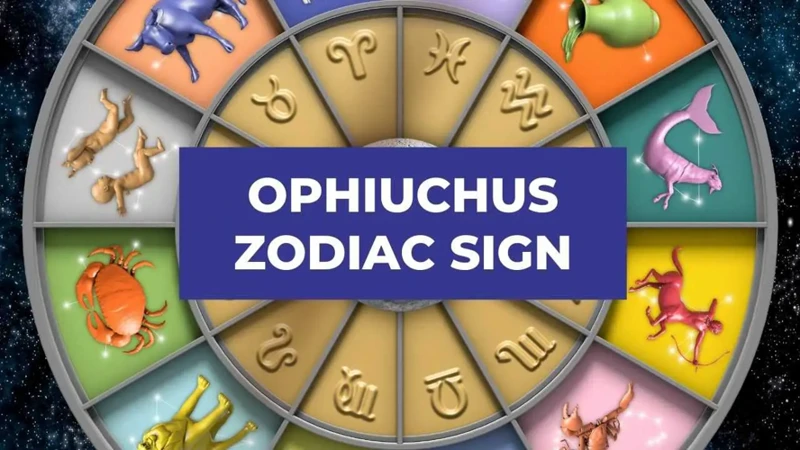
1. How did the lotus flower become a symbol of rebirth in ancient Egypt?
In ancient Egypt, the lotus flower was believed to symbolize rebirth due to its unique ability to emerge from muddy waters and bloom into a beautiful flower. This cycle of emergence and blossoming represented the journey of the soul after death, highlighting the idea of resurrection and the continuation of life beyond the earthly realm.
2. What role did the lotus flower play in Egyptian religious rituals?
The lotus flower held a significant role in Egyptian religious rituals. It was often used as an offering in temple ceremonies, symbolizing purity, fertility, and divine connection. The flower was also considered sacred to several Egyptian deities, including the goddess Isis and the god Atum, further emphasizing its spiritual significance.
3. How is the lotus flower depicted in Egyptian art?
The lotus flower is commonly depicted in Egyptian art, often as a symbol of rebirth and fertility. It can be seen in wall paintings, tomb decorations, and architectural elements. The flower is typically portrayed in full bloom with vibrant petals and long, graceful stems, showcasing its natural beauty and association with flourishing life.
4. Did the lotus flower have any medicinal properties in ancient Egypt?
Yes, the lotus flower was believed to have various medicinal properties in ancient Egypt. It was used by Egyptian physicians to treat ailments such as diarrhea, fevers, and skin irritations. The flower’s seeds were also utilized as a natural sedative and were a popular ingredient in herbal remedies of that time.
5. Was the lotus flower associated with any specific Egyptian pharaohs?
Yes, the lotus flower held significance for certain Egyptian pharaohs. For example, the pharaoh Amenhotep III was often depicted wearing a crown adorned with lotus flowers, symbolizing his divine power and connection to rebirth. The association with the lotus further emphasized the pharaoh’s role as a bridge between the mortal world and the realm of the gods.
6. What other symbols were often combined with the lotus flower in Egyptian art?
In Egyptian art, the lotus flower was often combined with symbols such as the sun disk (representing the sun god Ra), the ankh (a symbol of life), and the scarab beetle (a symbol of transformation and resurrection). These combinations highlighted the interconnectedness of various concepts and deities within ancient Egyptian belief systems.
7. Is the lotus flower mentioned in any ancient Egyptian texts?
Yes, the lotus flower is mentioned in several ancient Egyptian texts, such as the Pyramid Texts and the Book of the Dead. These texts contain spells, prayers, and mythological narratives that reference the lotus flower and its connection to creation, rebirth, and the afterlife.
8. Did the lotus flower have any economic significance in ancient Egypt?
Yes, the lotus flower had economic significance in ancient Egypt. The flower was not only used for its symbolic and religious purposes but also for practical uses. For example, the lotus plant provided a source of food, as its seeds and rhizomes were consumed by the ancient Egyptians. Additionally, the lotus fiber was used in making ropes, mats, and other textiles.
9. Was the lotus flower associated with any specific Egyptian cities or regions?
Yes, the lotus flower was associated with specific cities and regions in ancient Egypt. One notable example is the city of Thebes, where the lotus was considered a symbol of the local deity Amun. The sacred lotus lake of Thebes was renowned for its natural beauty and religious significance.
10. How does the symbolism of the lotus flower in ancient Egypt influence contemporary culture?
The symbolism of the lotus flower in ancient Egypt continues to inspire and influence contemporary culture. Its representation of rebirth, purity, and spiritual connection resonates with people across the world. The lotus remains a popular motif in art, jewelry, and tattoos, serving as a reminder of the ancient wisdom and enduring beauty associated with this remarkable flower.
References
- Symbolism Of The Lotus In Ancient Egypt
- Exploring Lotus Flower Meaning in Different Cultures
- Lotus Flower Meaning: History, Symbolism
Frequently Asked Questions

1. What is the significance of the lotus flower in ancient civilizations?
The lotus flower holds deep cultural symbolism in ancient civilizations, representing themes such as creation, rebirth, purity, and spiritual enlightenment.
2. How was the lotus flower portrayed in ancient Egyptian mythology?
In ancient Egypt, the lotus flower was greatly revered and associated with the creation myth, symbolizing the emergence of life and the birth of the sun god. It also represented rebirth and resurrection, often depicted in the art and architecture of ancient Egypt.
3. What role does the lotus flower play in Hinduism?
In Hinduism, the lotus flower holds great religious significance. It represents divine beauty, purity, and spiritual awakening. It is often associated with the gods and goddesses, especially the goddess Lakshmi, who is depicted seated on a lotus.
4. How is the lotus flower connected to Buddhism?
The lotus flower holds immense symbolism in Buddhism, representing purity and spiritual enlightenment. It is often depicted in Buddhist art and is believed to indicate the path to enlightenment, growing and blossoming even in muddy waters.
5. What is the mythological significance of the lotus flower in ancient China?
In Chinese mythology, the lotus flower has various mythical connotations. It is associated with purity and is believed to be a symbol of spiritual rebirth. The lotus is also linked to myths of immortality and is frequently portrayed in Chinese art and literature.
6. How does the lotus flower connect to Greek mythology?
Within Greek mythology, the lotus flower is often linked to stories of transformation and purity. It is associated with the story of the nymph Lotis, who transformed into a lotus flower to escape unwanted advances. The lotus also holds significance in spiritual practices, representing enlightenment and the divine.
7. What is the role of the lotus flower in Zoroastrianism?
In Zoroastrianism, the lotus flower signifies purity and spiritual awakening. It is seen as a divine symbol, representing the elements of perfection, righteousness, and immortality. The lotus flower is connected to the Zoroastrian concept of Amesha Spentas, the highest divine beings.
8. How is the lotus depicted in Japanese Buddhism?
In Japanese Buddhism, the lotus flower has deep symbolic meaning. It is associated with purity and spiritual awakening, similar to other Buddhist traditions. It often appears in Japanese artwork and represents enlightenment and the potential for spiritual growth.
Common themes related to the lotus flower in ancient civilizations include creation, rebirth, purity, spiritual enlightenment, divine beauty, immortality, and the connection between the physical and spiritual realms.
10. How does the cultural significance of the lotus flower endure in modern society?
The cultural significance of the lotus flower continues to resonate in modern society. It is still revered for its symbolism of purity, beauty, spiritual growth, and the journey towards enlightenment. The lotus is often used in various forms of art and is considered a timeless symbol of deep spiritual and cultural meaning.
References
- The Secret Meaning of the Lotus Flower
- Symbolism Of The Lotus In Ancient Egypt
- Lotus Flower Meaning | History & Symbolism






